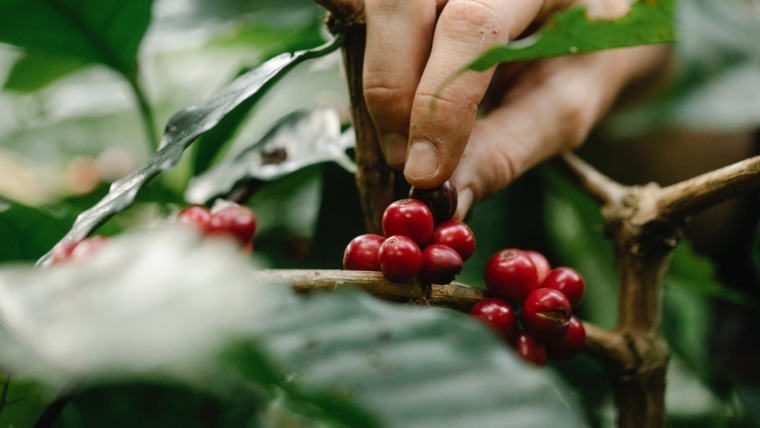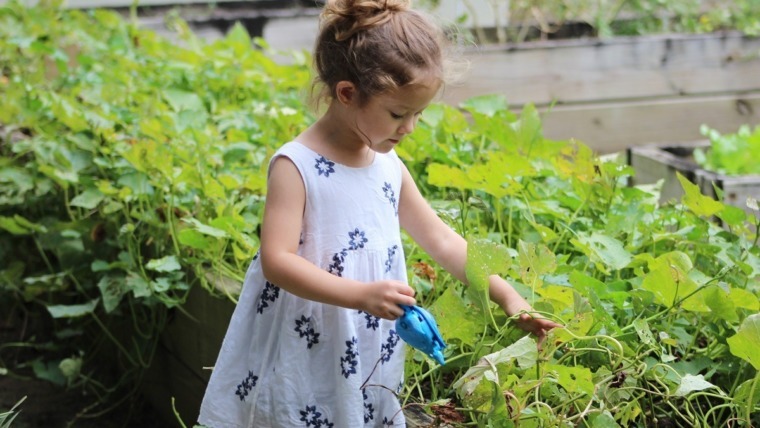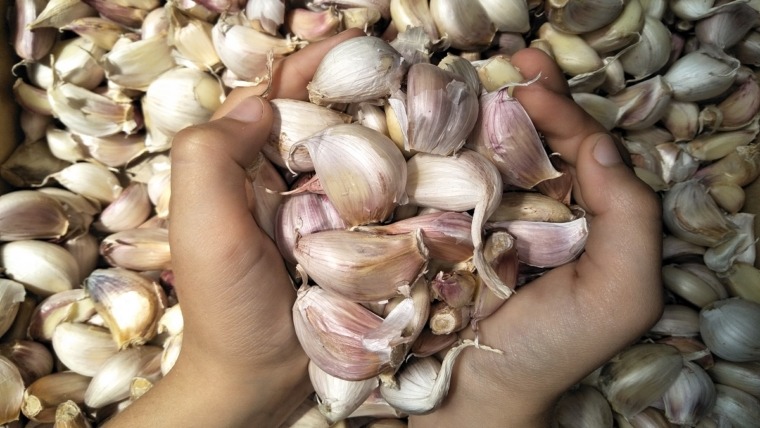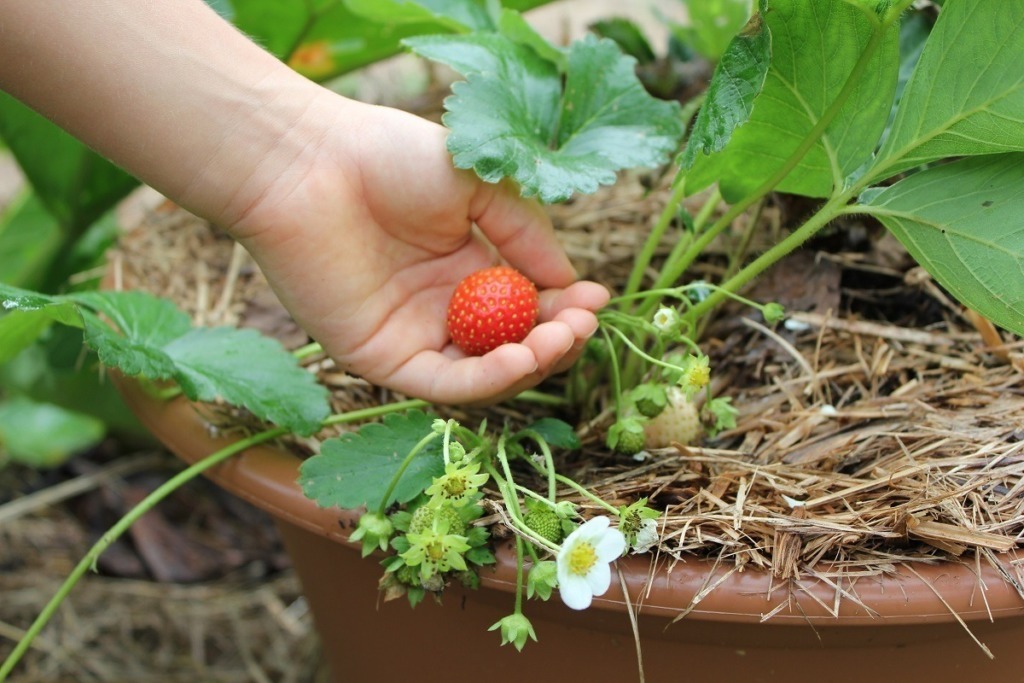
Written by Cath Manuel
Fresh, home-grown food really packs a healthy punch when it comes to our body’s needs.
Healthy food is necessary for a thriving, active lifestyle for us all, especially growing children. Fresh fruit and vegetables are an important part of our daily eating, and more people are realising the importance of organic foods in our diets to benefit our well-being and also the planet.
Home-grown organic food provides the maximum nutrients from the plants. The reason for this is that food grown at home, at a community garden or local organic farm, grows in healthy soil, filled with life and vitality.
Organic gardeners, like me, just love healthy soil! It’s the life that our food is grown in and is an important part of a thriving, sustainable garden and healthy lifestyle.
Growing fresh food is easy once you understand a few basic things…
- Be an organic gardener – use natural products in your garden, not chemicals. Read product packaging before purchasing and look for an organic certification logo.
- Grow easy foods – have a list of 5 veggies, herbs and fruits that you love to eat and learn to grow them. Choose a few nutrient-packed foods that grow well in your climate. See a few of my faves below.
- Start a Compost system – Teach your kids to reduce waste and improve the earth by composting kitchen and garden waste. Compost is one of the best ways to improve the soil and grow fresh foods, as it’s packed with loads of nutrients. Follow my simple steps here (yes Composting is super easy once you follow my quick method!!) www.soiltosupper.com/do-you-know-how-to-compost/
- Be a great garden-guru for your kids by teaching them about gardening, nature and how to care for our earth.
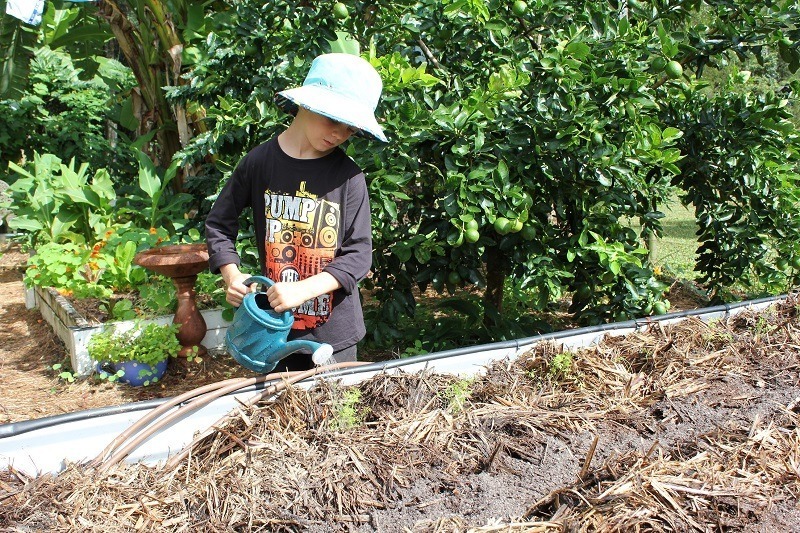
I love the feeling of picking fresh foods from my garden every morning to use with breakfast and lunchboxes. As a gardener and mum, it’s really rewarding to offer food to my family that I’ve put love and care into to grow. It’s also great to watch them eat it all!
A few of my favourite Power-Foods are…
Celery
Both stems and leaves are used raw or in cooking. Celery improves digestion, is high in silicon and vitamin k, an anti-oxidant and anti-inflammatory.
Celery plants are also easy to grow and once established will grow for months, producing crunchy stems and leaves to eat. In warm climates plant Celery seedlings in part shade positions to reduce moisture evaporation.
Grow Celery from seeds into plastic punnets or purchase seedlings from a quality grower. When planting into the garden, group small plants together to assist with moisture retention, apply a slow-release organic fertiliser and mulch with a fine organic mulch.
For crunchy sweet stems, harvest when stalks are still narrow, approx. 1-2cm thick, apply fertiliser to the soil and regular water. This provides moisture to keep the stems juicy!
Celery stems are great in kid’s lunchboxes with a small tub of hummus and the stems and leaves can be used in green smoothies or through the juicer.
Celery plants are also easy to grow and once established will grow for months, producing crunchy stems and leaves to eat. In warm climates plant Celery seedlings in part shade positions to reduce moisture evaporation.
Grow Celery from seeds into plastic punnets or purchase seedlings from a quality grower. When planting into the garden, group small plants together to assist with moisture retention, apply a slow-release organic fertiliser and mulch with a fine organic mulch.
Cucumber
These crunchy little treats are great to grow in your garden up a wire trellis or on a tepee. They attract bees to the garden, especially when grown with Nasturtiums, Fennel or Dill, which are good companion plants of Cucumbers.
Cucumbers are a handy little vegetable to have growing in your garden. Picked as small fruits they are great in lunchboxes, or allowed to grow a little longer adds extra nutrients to your morning juices.
Pick regularly to encourage more flowers…and more fruit!!
The skin of Cucumbers contain vital nutrients, so if possible use organically grown or spray-free vegetables.
Berries – Strawberry, Blueberry and Raspberry.
High in antioxidants, anti-inflammatory, vitamins C, silicon, vitamin K, manganese, fibre, anti-cancer…plus!
Grow in containers or in the ground. Most Berries prefer their own space and applying fertiliser to the soil and then mulching is important.
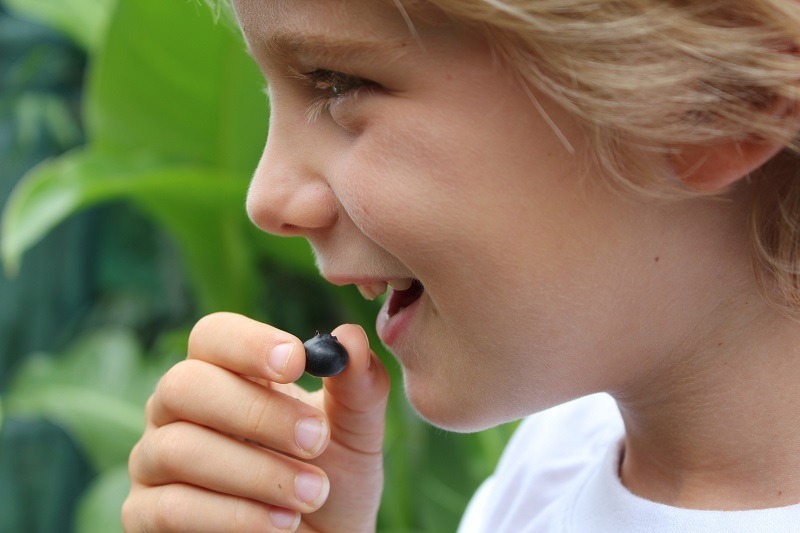
Grow Raspberry along a trellis or wire support, grow Strawberry in tubs or raised garden beds and Blueberries grow well in large tubs. Berries are a delicious crop for your children, or grandchildren, to grow. Finding them is like a treasure hunt!
If you have limited space or time consider growing a few foods and herbs in containers or a small space in your garden, and as you gain confidence you can increase your crops and grow more of what you love to eat.
Enjoy!!
Growing Foods with Growing Foods with Growing Foods with Growing Foods with

